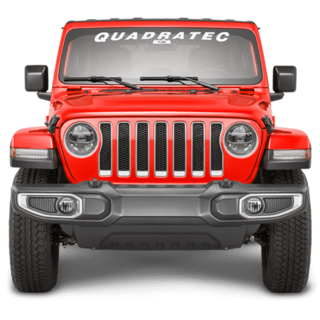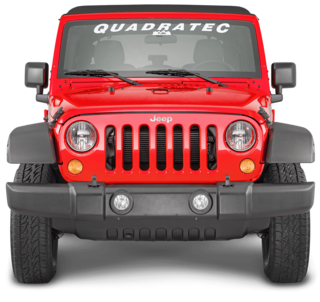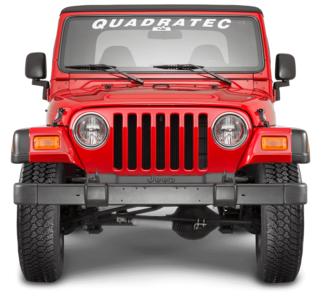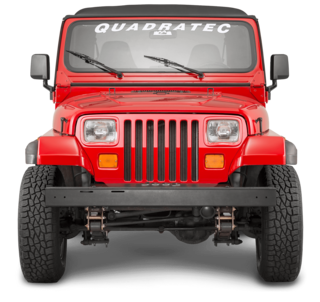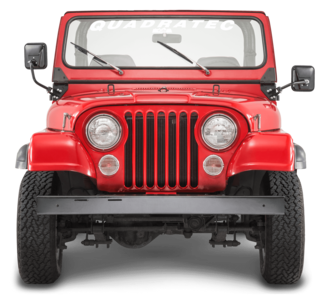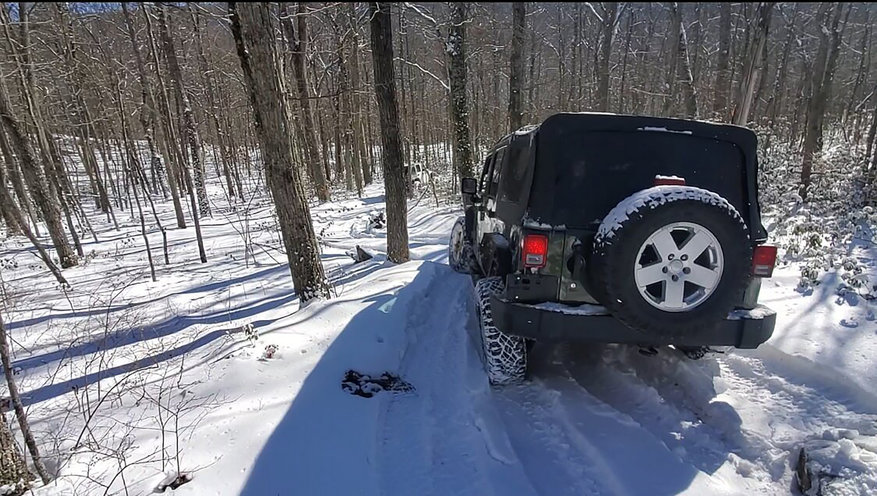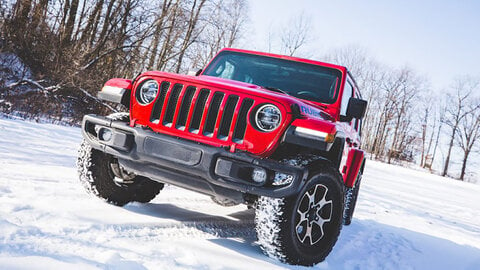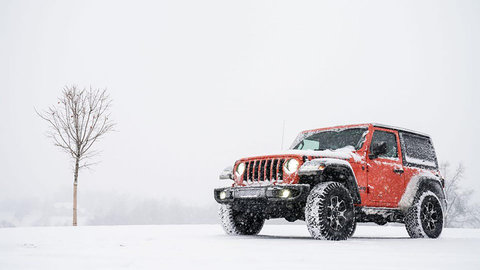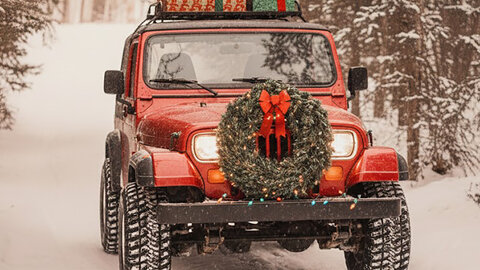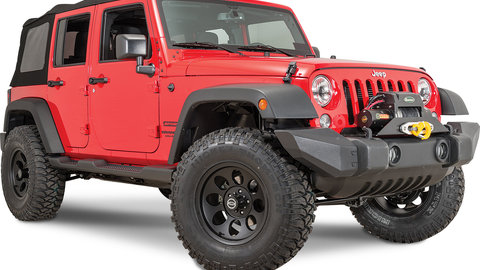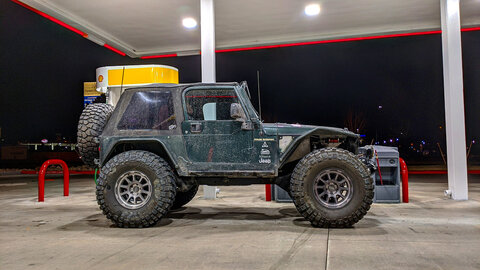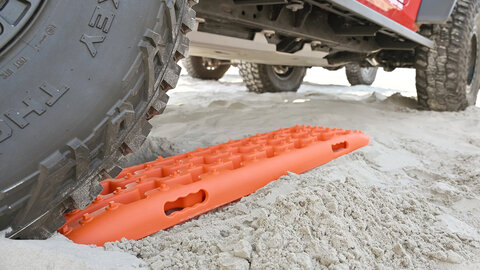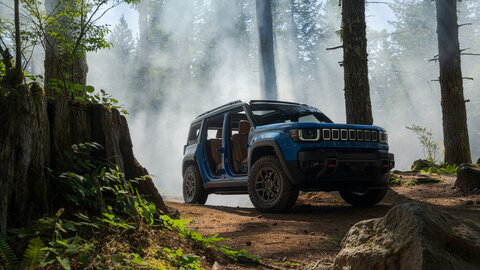by Kyle Buchter
Quadratec Trail Boss
Have you ever taken a trail ride in the snow and found yourself stuck? It happens. And when it does, you can quickly find out a snowy or icy Jeep recovery really differs from just about any other type of dry and warm weather recovery. Yup, the winter season can be a great time to get out and enjoy your Jeep on the trail, but there are definitely some tips you should know.
First off, different snow types can command different recovery techniques. This can go from tire pressures to types of recovery gear.
Soft and fluffy snow in shallow depths can be easy to drive through. But as you travel, that snow can build up in front of your tires and create a lot of resistance the further you travel. Often, you want to cut through it to the hard ground below. This means a taller and skinnier tire would be a huge help. And you really don’t want to air those tires down, as removing air creates a wider tire that causes more surface area to push and give resistance.
Soft and fluffy snow in deeper depths is a spot where floating on the surface definitely helps. So, in this instance, it means using a lower tire pressure. A bigger surface area will allow the tire to stay on top of the snow more than a tall, skinny tire.
How to tell the difference?
It is really something the driver has to feel and adapt, and there are many variables to consider that will affect this determination. Things like the weight of the vehicle, trail type, temperature, prior snowfall, trail conditions under snow, slope, tire type, tire condition, driving style, vehicle type, vehicle size, etc.
There is no set formula to do this, because things can change every time you go out in the snow. We have seen conditions one day be a certain type, and then a three-inch snowfall overnight created completely different conditions the next day.
Wet snow can be completely different, as well. It can be shallow and slushy, but it can also pack and turn to ice, which is a difficult thing because unless you are running chains or studded tires, then ice is simply ice. This can lead to a trail being fine on the first pass, but by the time you come back — or three or four other vehicles drive on it, then it becomes solid ice. And dangerous.
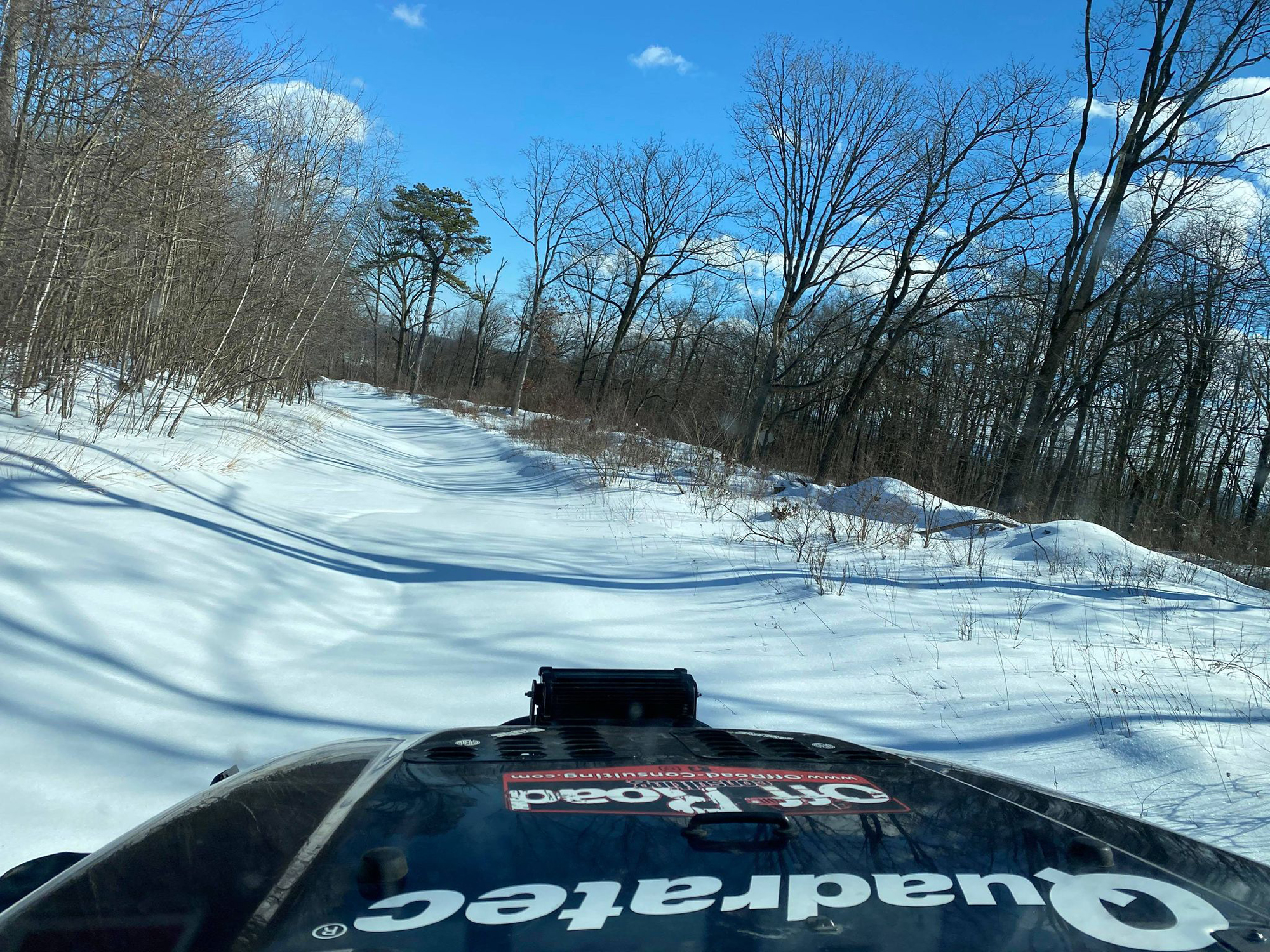
Fresh snow can give better resistance to help slow you down when descending while providing some traction on a hill climb. Again, though, every situation will be different, so the best bet is to use common sense when attacking any obstacle in these conditions.
Sometimes, things can happen though.
And now that you are stuck…
What caused the vehicle to get stuck?
Snow drifts can be very sneaky. You are driving along in six inches of snow, and bam, now you are suddenly enveloped in four feet of snow. Drifts hide depressions under the snow, and these conditions often make everything look flat. This can really catch you off guard, and if you are rolling along at speed, it can bury you instantly.
A key part of snow driving is how quickly the driver can react. If you are going along and feel the snow getting deep, stop and back up while you can. If not, you could find yourself in a not-so-nice situation.
So you get stuck or buried — now it's time to recover.
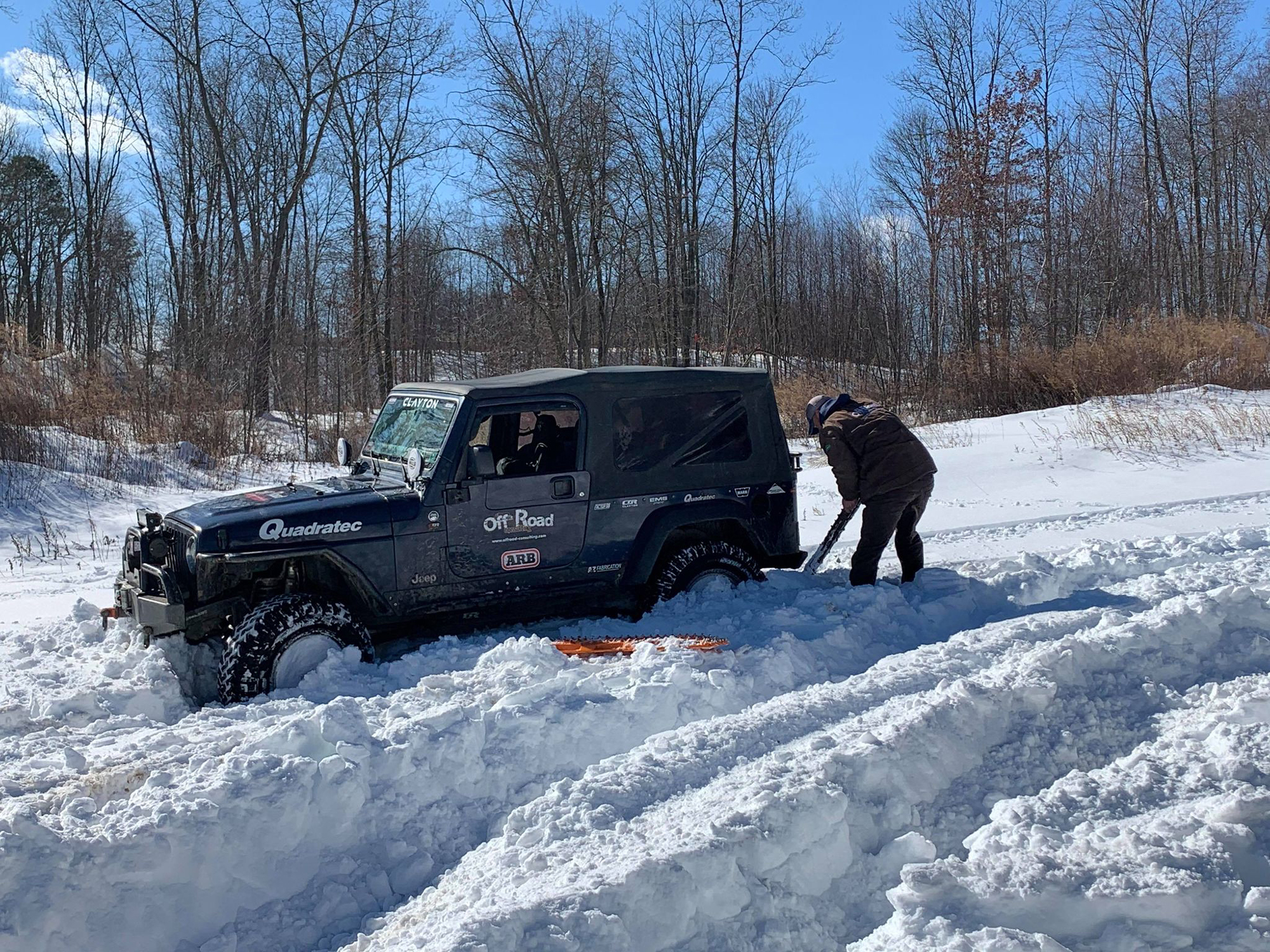
In deep-drifted snow, open areas may have no trees or spots to anchor a winch. That’s why carrying a shovel, strap, traction boards, winch, or other recovery items in your Jeep trail kit can help you get out of that snow. You will have to be creative when figuring out the best way to extricate yourself because every situation will be a little different.
Besides ensuring you have the proper gear to get out of whatever situation you encounter, having a second vehicle (never wheel alone) is always the best practice. They can help pull you out of the situation. However, that second vehicle may not have the traction needed to help, depending on the terrain. If so, then they are there to help you dig and stay calm.
The nice thing about snow is that there is rarely any suction or mire associated with it. It is a wall of snow to push through or have limited traction. However, traction can be found with the right amount of gear and creativity. These are the same type of things when it comes to deep snow.
Icy conditions are always something that seems to change. And one of the most common situations is the trail turning to packed, slippery snow or ice. This requires a different driving style but can go from ‘ok, I’m fine’, to ‘oh no, I’m stuck’, in no time.
You can drive along and hit a deeper or limited traction spot. Your tires then start to spin, creating icy pockets. These icy pockets create an area with no traction.
When this happens, not only is there no grip for the tires, but the tires now have a very small inline to climb up at all four tire positions. This factor can cause someone to get stuck in as little as two inches of snow. So when this happens, a metallic trail shovel or some other sharp object to chisel ice out of the way is definitely needed.
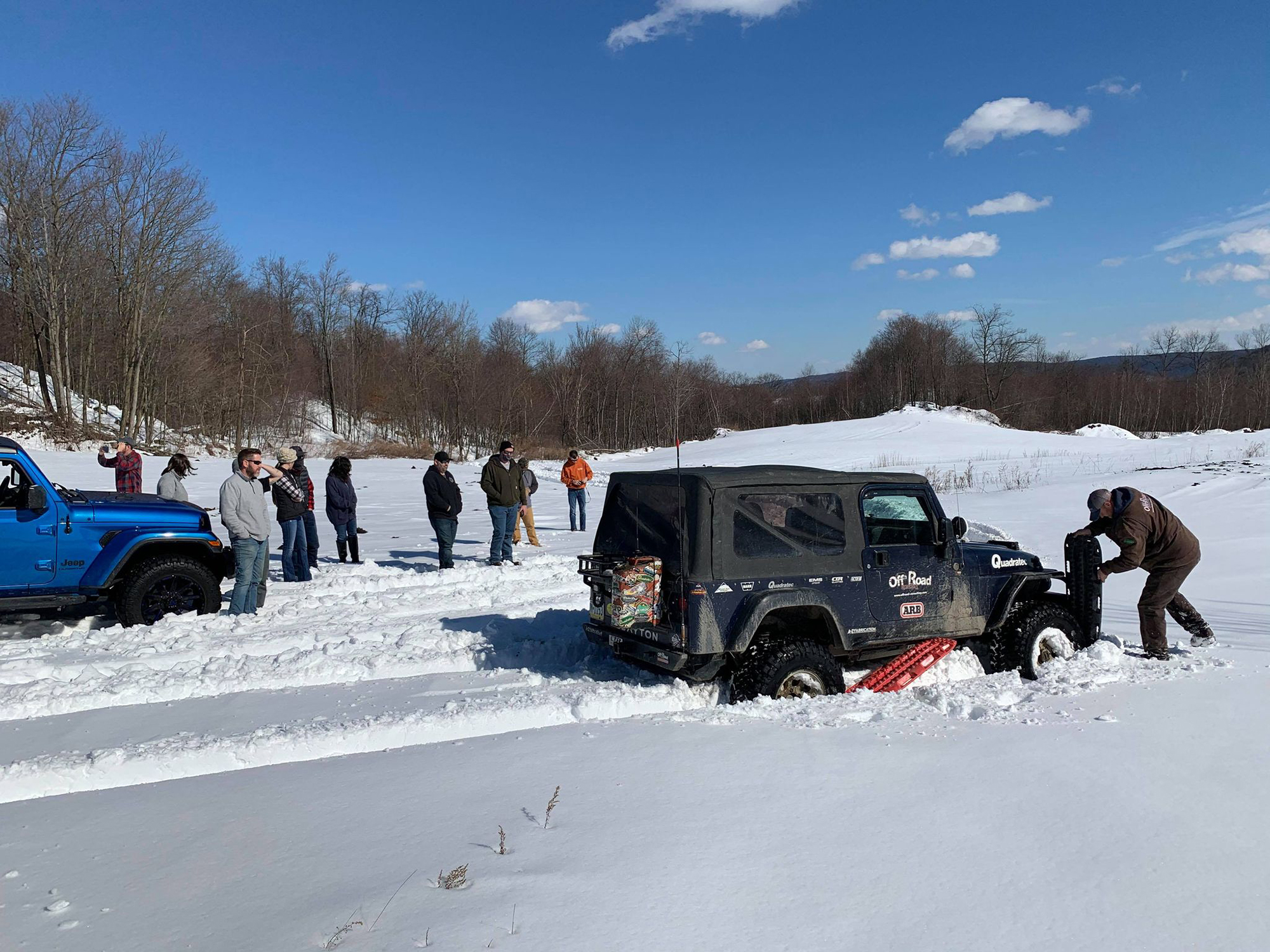
If you don’t have something like that, then another type of traction aid such as ash, sand, dirt, gravel, floor mat, or a traction board like the Res-Q Series , may help you get free. Even still, it may require aid from a winch to pull the vehicle out.
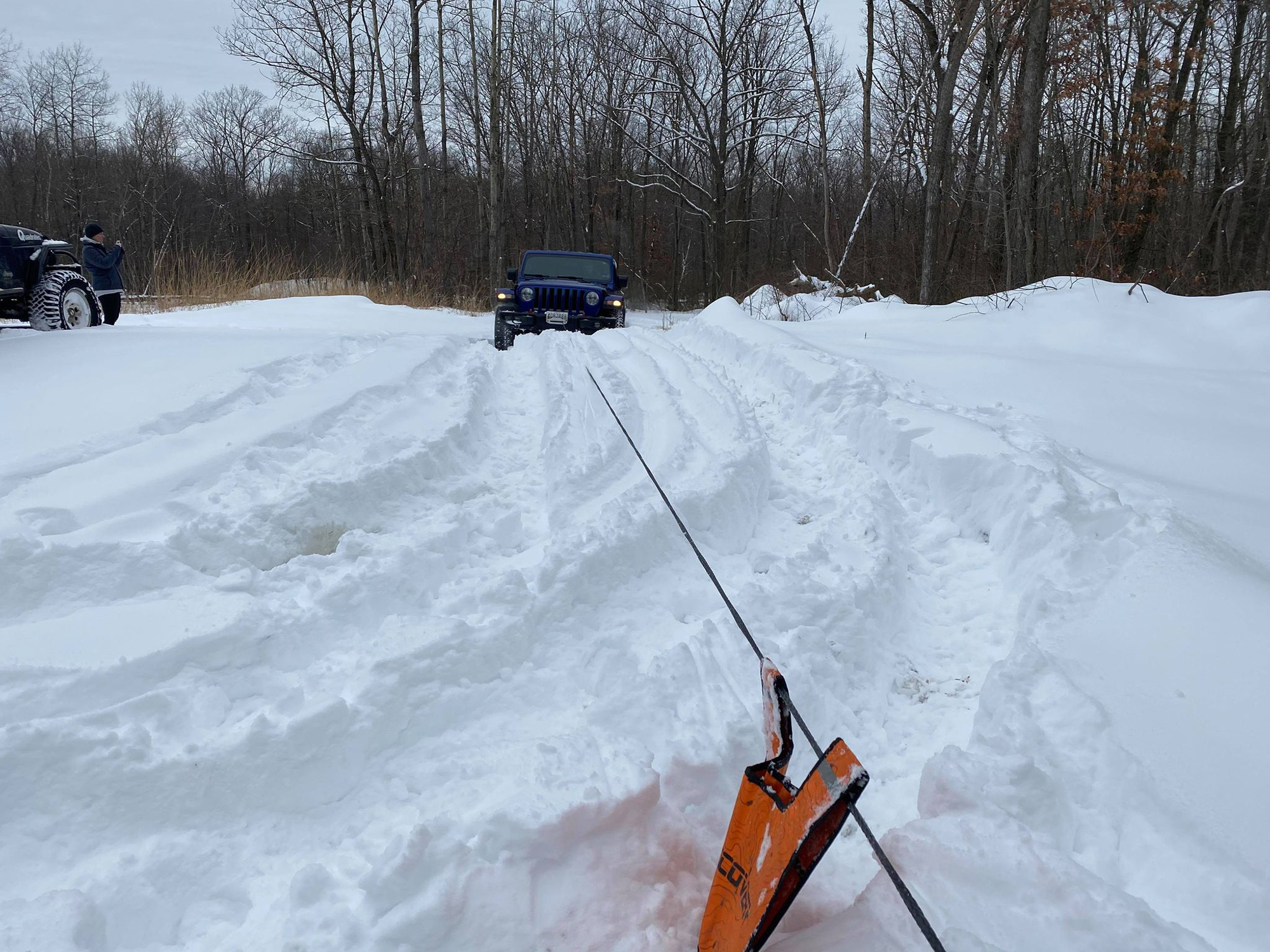
Using a winch with a light driving touch can pull the vehicle, while also keeping it from sliding. Remember that in icy conditions, slow and steady wins the race. The faster you go, the longer it takes you to stop. So, going slow and searching for traction is key. And remember, each situation can require a completely different type of tool or technique to get out of the spot. Ensure your Jeep trail kit has recovery items before heading out for the day.
Besides snow drifts, hidden objects under the snow can also trap your vehicle. The deeper the snow, the more it can hide things like logs, depressions and rocks.
If you are ripping along at speed to keep momentum, you can easily hit one of these objects and damage the vehicle. Or, you could catch one of them to the point where they become lodged in the undercarriage and you find yourself stuck. Additionally, ditches and depressions will suck a vehicle in and hold on to it tight.
Reading the terrain and conditions can keep you on track, but even a seasoned driver can get caught.
Don’t panic; use common sense, and make sure you understand the type of situation that has caused the issue. Then, use the above advice and your recovery gear to get back to enjoying your day on the trail.
Basic equipment:
- Recovery strap or Kinetic energy rope
- Proper recovery points
- Shackles (metal or soft depending on the attachments)
- Winch
- Winch kit
- Traction Boards
- Shovel
- Cold weather gear kit (clothes, boots, gloves, etc.)
Related Articles:
Nine Essential Items For Your Jeep Winter Emergency Kit


